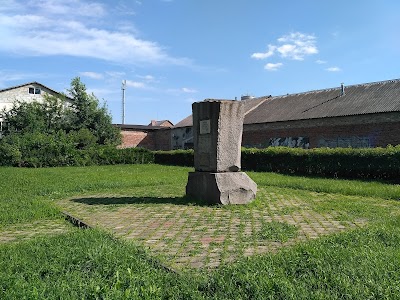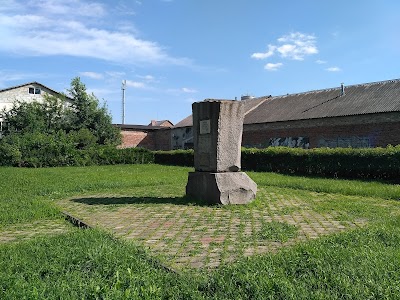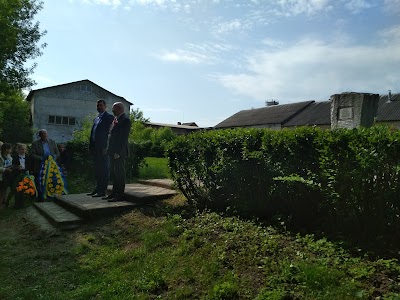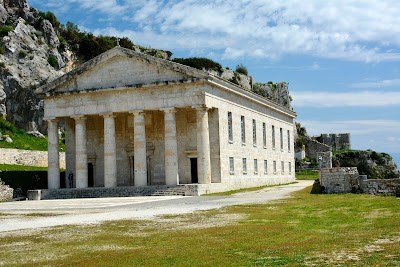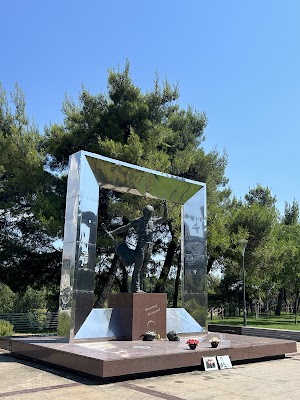Memorial to the Victims of Fascism (Spomenik žrtvama fašizma)
Overview
Located in the heart of Montenegro's capital, Podgorica, the Memorial to the Victims of Fascism serves as a poignant reminder of the country's turbulent history during World War II. Known locally as "Spomenik žrtvama fašizma," this solemn monument is nestled within the lush surroundings of Park Petrović, offering visitors a space for reflection and solace amidst nature's beauty.
Unveiled in 1981, the memorial was crafted by the renowned Montenegrin sculptor Miodrag Živković. Its abstract, sculptural forms evoke a powerful sense of struggle and resilience, with a distinct modernist design that symbolizes the suffering, courage, and unyielding spirit of those who resisted fascist forces. As one of Podgorica's key historical landmarks, the memorial attracts visitors interested in the rich tapestry of the region's history and art.
The historical context surrounding the memorial is deeply significant. Montenegro, like much of Europe, faced brutal occupation during World War II, witnessing numerous acts of resistance by local partisans. This monument honors those brave resistance fighters and the countless civilians who endured hardships under fascist regimes. It serves as a poignant reminder of the atrocities of war and the high cost of freedom.
One of the unique aspects of the memorial is its setting within Park Petrović, a tranquil and verdant area that once belonged to the Montenegrin royal family. The serene environment of the park juxtaposed with the somber significance of the memorial enriches the visitor experience. As you stroll through the park, you can explore additional historical sites and revel in the area's natural beauty.
For international tourists, a visit to the Memorial to the Victims of Fascism provides a valuable opportunity to delve into Montenegro's wartime history while reflecting on broader themes of human resilience and the struggle against oppression. The site is easily accessible and can seamlessly fit into a day tour of Podgorica. Informative plaques surrounding the monument offer context, ensuring visitors grasp the importance of what they are witnessing.
Interestingly, the memorial's design embodies the broader artistic movements of its era. In the latter half of the 20th century, many Eastern European nations commissioned abstract and brutalist-style monuments to commemorate the victims of World War II and celebrate resistance. These structures aimed to evoke strong emotional responses and serve as lasting symbols of national perseverance, with the Memorial to the Victims of Fascism in Podgorica standing as a prime example of this artistic trend.
Another fascinating aspect of the memorial is the local community's engagement with the site. Each year, commemorative events are held here, uniting the community in honoring those who lost their lives. These events often include speeches, wreath-laying ceremonies, and moments of silence, fostering a sense of unity and remembrance. Attending one of these events can provide visitors with a deeper understanding of the cultural significance and ongoing impact of historical memory in Montenegro.
In conclusion, the Memorial to the Victims of Fascism in Podgorica is not merely a historical site; it is a place imbued with powerful emotions and a testament to the indomitable spirit of a nation. Whether you are an enthusiast of history, art, or simply seeking a tranquil spot for contemplation, this memorial offers a profound and enriching experience. Its striking design, historical importance, and serene setting make it a must-visit landmark for anyone traveling to Montenegro. By visiting, you not only pay homage to those who suffered and fought against fascism but also contribute to the ongoing remembrance of a crucial chapter in human history.


